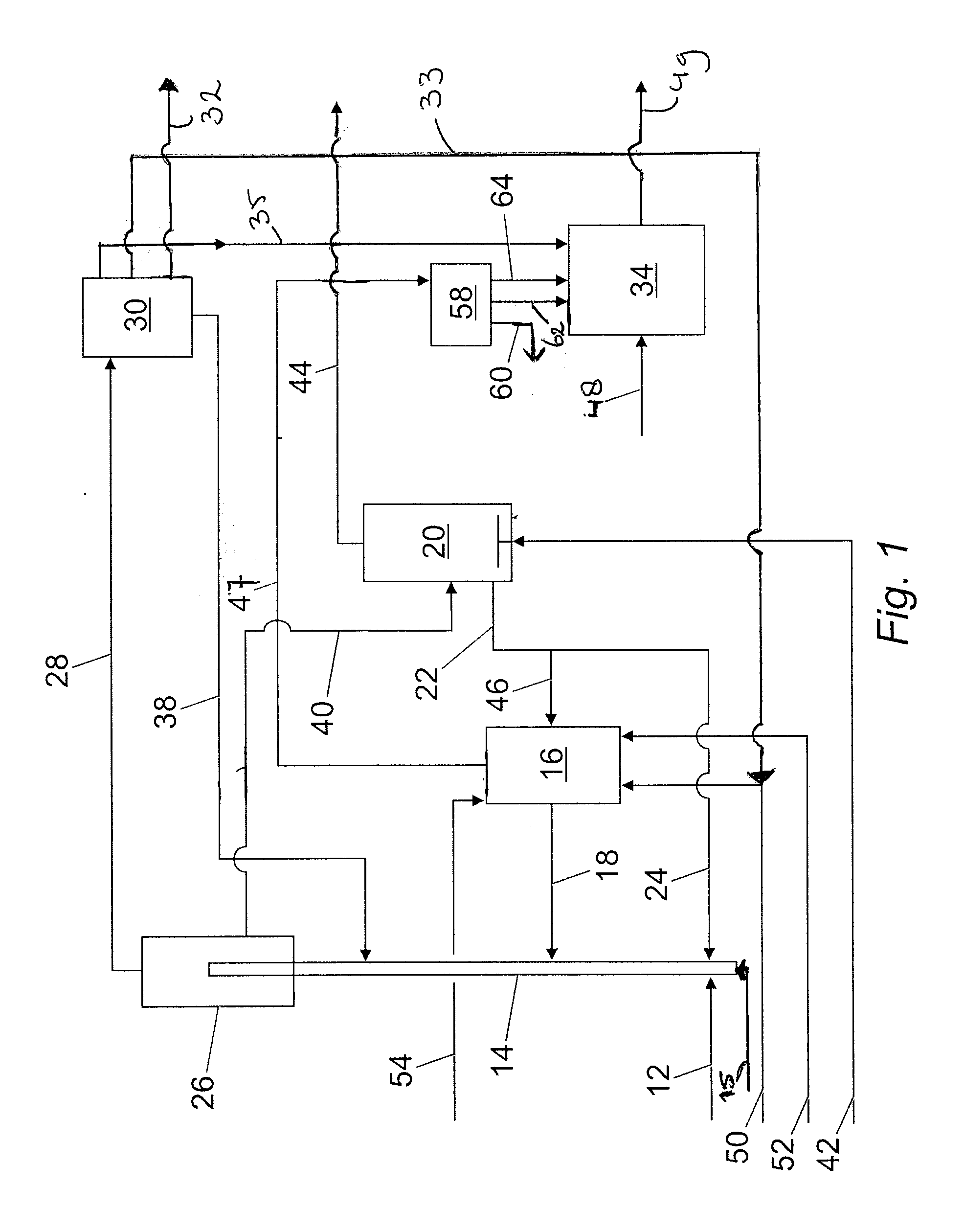Process for the preparation of alkylate and middle distillate
a technology of alkylate and distillate, which is applied in the field of process for the preparation of alkylate and middle distillate, can solve the problems of low middle distillate product yield, poor middle distillate product quality, and high reaction temperature reaction conditions
- Summary
- Abstract
- Description
- Claims
- Application Information
AI Technical Summary
Benefits of technology
Problems solved by technology
Method used
Image
Examples
example 1
Comparative
[0088]In a riser reactor, a vacuum gasoil with an initial boiling point of 138° C. and a final boiling point of 605° C. was contacted with a cracking catalyst comprising 12 wt % ZSM-5 as shape-selective additive at a temperature of 593° C. The gas residence time in the riser reactor was 3 seconds. In different experiments, the catalyst / oil ratio was varied. Total conversion of the feed, coke yield, yields of C3, C4 and C5-olefins were determined.
example 2
Invention
[0089]EXAMPLE 1 was repeated but now with a Fischer-Tropsch derived wax (waxy raffinate) with an initial boiling point of 335° C. and a final boiling point of 557° C. as feedstock.
[0090]The results of EXAMPLES 1 and 2 are given in the Table below.
examples 1 and 2
Results of EXAMPLES 1 and 2
[0091]
C / O ratio681012VGOconversion (wt %)77818386coke yield(wt %)561213C3 olefin yield (wt %)14141313C4 olefin yield (wt %)111098C5 olefin yield (wt %)5432Waxy raffinateconversion (wt %)98989898coke yield(wt %)1.21.21.31.3C3 olefin yield (wt %)24232221C4 olefin yield (wt %)23212120C5 olefin yield (wt %)14131211
[0092]EXAMPLE 2 is an example of the second reaction zone in the process according to the invention. EXAMPLE 2 shows that of the second reaction zone is fed with a feedstock obtained in a Fischer-Tropsch hydrocarbon synthesis process, the conversion is higher than with a conventional FCC feedstock such as VGO (see EXAMPLE 1). Also, the yield of C3-C5 olefins, i.e. the olefins that may be alkylated in an alkylation unit, is significantly higher. Coke yield is much lower when using a feedstock obtained in a Fischer-Tropsch hydrocarbon synthesis process.
PUM
| Property | Measurement | Unit |
|---|---|---|
| temperature | aaaaa | aaaaa |
| temperature | aaaaa | aaaaa |
| temperature | aaaaa | aaaaa |
Abstract
Description
Claims
Application Information
 Login to View More
Login to View More - R&D
- Intellectual Property
- Life Sciences
- Materials
- Tech Scout
- Unparalleled Data Quality
- Higher Quality Content
- 60% Fewer Hallucinations
Browse by: Latest US Patents, China's latest patents, Technical Efficacy Thesaurus, Application Domain, Technology Topic, Popular Technical Reports.
© 2025 PatSnap. All rights reserved.Legal|Privacy policy|Modern Slavery Act Transparency Statement|Sitemap|About US| Contact US: help@patsnap.com

